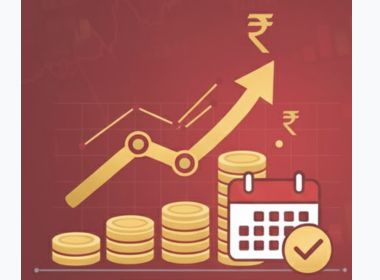Search Suggestions
- Gold Loan
- Money Transfer
- Mutual Funds

STP vs SIP: Which One is Better for Mutual Fund Investment?
Making smart investment choices is essential for building long-term financial stability. Among the many options available, Systematic Investment Plans (SIPs) and Systematic Transfer Plans (STPs) are two popular strategies that cater to different financial goals and risk profiles. Each has distinct features designed to suit varied investor needs. SIPs allow you to invest a fixed amount regularly in mutual funds, promoting disciplined saving. STPs, on the other hand, help in gradually shifting funds from one scheme to another, often used to reduce market timing risk.
This blog will break down the key differences between SIPs and STPs to help you determine which approach may be better suited for your financial objectives and overall investment strategy.
Table Of Content
- What is a Systematic Investment Plan (SIP)?
- What is a Systematic Transfer Plan (STP)?
- Key Differences: STP Vs SIP?
- Which Is A Better Option: SIP Vs STP?
What is a Systematic Investment Plan (Sip)?
A Systematic Investment Plan is a disciplined way to invest in mutual funds by contributing fixed amounts at regular intervals, usually monthly or quarterly. Instead of making a lump-sum investment, SIPs allow you to invest smaller amounts consistently, making it more manageable and accessible. This method helps build long-term wealth through the power of compounding and benefits from rupee cost averaging, which reduces the impact of market volatility. SIPs are ideal for investors looking to cultivate a habit of regular saving and achieve financial goals gradually while minimising the risks associated with market timing.
What is a Systematic Transfer Plan (STP)?
On the flip side, a Systematic Transfer Plan (STP) is an investment strategy that enables investors to shift a fixed amount of money from one mutual fund to another at regular intervals. Typically, the transfer is made from a liquid or debt fund to an equity fund, helping investors gradually enter the market and reduce volatility risk. An STP in mutual fund investing is ideal for those aiming to rebalance their portfolio or move assets strategically into higher-return opportunities over time, without committing a lump sum all at once.
Key Differences: STP Vs SIP?
When planning your investments, understanding the difference between SIP and STP in mutual fund strategies can help you choose the best fit for your financial goals. While both involve systematic approaches to investing, they serve different purposes. A SIP allows you to invest a fixed amount regularly into a mutual fund, whereas STP finance involves transferring money between funds over time. Here’s a detailed comparison to help you understand how each works: -
Parameter | SIP | STP |
Plan Type | Investment of fixed sums at intervals | Transfer of funds between schemes |
Process | Invests money from your bank into mutual funds regularly | Transfers money from one mutual fund (usually liquid/debt) to another (typically equity) |
Taxation | Tax applies only when you redeem your mutual fund units | Transfers are considered redemptions and may attract capital gains tax |
Purpose | Build wealth gradually through regular investments | Reduce risk and time market entry or rebalance portfolio |
Advantage | Rupee cost averaging, disciplined saving, compounding | Market volatility management, smoother fund allocation |
Which Is A Better Option: SIP Vs STP?
When deciding between a Systematic Investment Plan (SIP) and a Systematic Transfer Plan (STP), it's essential to understand their distinct features and how they align with your financial goals. Below are six key factors to consider:
1. Investment Approach
- SIP: Involves investing a fixed amount from your bank account into a mutual fund at regular intervals, promoting disciplined savings.
- STP: Entails transferring a predetermined amount from one mutual fund scheme (usually a debt or liquid fund) to another (typically an equity fund) at regular intervals.
2. Capital Requirement
- SIP: Ideal for investors with a steady income who can invest smaller amounts periodically.
- STP: Suitable for those with a lump sum amount, allowing gradual exposure to equity markets while the remaining funds earn returns in the source scheme.
3. Risk Management
- SIP: Helps mitigate market volatility through rupee cost averaging, as investments are spread over time.
- STP: Reduces the risk of market timing by systematically transferring funds, benefiting from market fluctuations.
4. Tax Implications
- SIP: Each investment is treated as a new purchase, with capital gains tax applicable upon redemption based on the holding period.
- STP: Transfers are considered redemptions from the source scheme and may attract capital gains tax, depending on the duration of investment in the source fund.
5. Flexibility and Control
- SIP: Offers flexibility in terms of investment amount and duration, with the option to pause or stop investments as needed.
- STP: Provides control over fund allocation between schemes, aiding in portfolio rebalancing and aligning with changing financial goals.
6. Use of Tools
- SIP: Various SIP calculators are available to project potential returns based on investment amount, duration, and expected rate of return.
- STP: Utilising an STP in mutual fund calculator can help estimate the outcomes of systematic transfers, considering factors like transfer amount, frequency, and expected returns.
Suggested Read: Sip Investment: What’s The Best Time To Start?
In summary, both SIP and STP have their unique advantages. SIPs are suitable for regular, long-term investments, while STPs are beneficial for strategic fund allocation and risk management. Understanding the benefits of STP and SIP in detail can help in making informed investment decisions.
Choosing between a SIP and an STP depends on your financial goals, risk appetite, and investment approach. If you're aiming for steady, long-term growth through regular savings, a SIP is ideal. On the other hand, if you have a lump sum and want to strategically enter the market, a STP is more suitable. Understanding how STP works, using tools like a mutual fund calculator or an STP in mutual fund calculator, and evaluating the benefits of STP will guide you in optimising your mutual fund investment journey effectively.
- Invest in Mutual Fund
- Systematic Investment Plan
- Mutual Fund Calculator
- Liquid Mutual Fund
- Debt Funds
- Balanced Funds
- Equity Linked Schemes
- Tax Saving Schemes
CATEGORIES
OUR SERVICES
-

Credit Score
-

Gold Loan
-

Personal Loan
-

Cibil Score
-

Vehicle Loan
-

Small Business Loan
-

Money Transfer
-

Insurance
-

Mutual Funds
-

SME Loan
-

Corporate Loan
-

NCD
-

PAN Card
-

NPS
-

Custom Offers
-

Digital & Cashless
-

Milligram Rewards
-

Bank Mapping
-

Housing Finance
-

#Big Business Loan
-

#Gold Loan Mela
-

#Kholiye Khushiyon Ki Tijori
-

#Gold Loan At Home
-

#Sunherisoch
RECENT POSTS

Understanding KDM Gold and Why it’s Banned
Know More
Gold loan boom: 3,000 new branches to open in India in 12 months
Know More
Gold Loan Boom: Rs 14.5 lakh crore market spurs NBFCs to add 3,000 branches
Know More
How BNPL Affects Your Credit Score
Know More
Inside the Muthoot money machine: How a Kerala family turned gold loans into a billion-dollar empire
Know More
Billionaire Family Turns India’s Gold Obsession Into a Fortune
Know More
What is a Cheque and its Different Types in India?
Know More
Benefits of Paying Your EMIs on Time: Why Timely Payments Matter
Know More
A Complete Guide to Report Online Fraud
Know More
How does a Personal Loan Affect your Credit Score?
Know MoreFIN SHORTS

What Are Co-Pay and Deductibles in Insurance Policies?
Know More
Should You Take a Loan Against Your Mutual Fund or SIP?
Know More
Top 5 Best Mid-Cap Mutual Funds to Watch in 2026
Know More
Are Personal Loans Right for Retirees? Key Points to Consider
Know More
What Happens to a Personal Loan After the Borrower Dies?
Know More
Best Loan Choices for Credit Scores of 580 and Below
Know More
7 Reasons Why a Gold Loan Is the Best Option for Small Businesses
Know More
10 Reasons Why People in India Prefer Physical Gold
Know More
Real Estate vs Gold: Which Is a Better Investment in India?
Know More
10 Common Mistakes That Make Investors Lose Money in Mutual Funds
Know More
10 Reasons Why Gold Has So Much Appeal in Uncertain Times
Know More
7 Ways Settling Debt Can Impact Your CIBIL Score
Know More- South +91 99469 01212
- North 1800 313 1212





